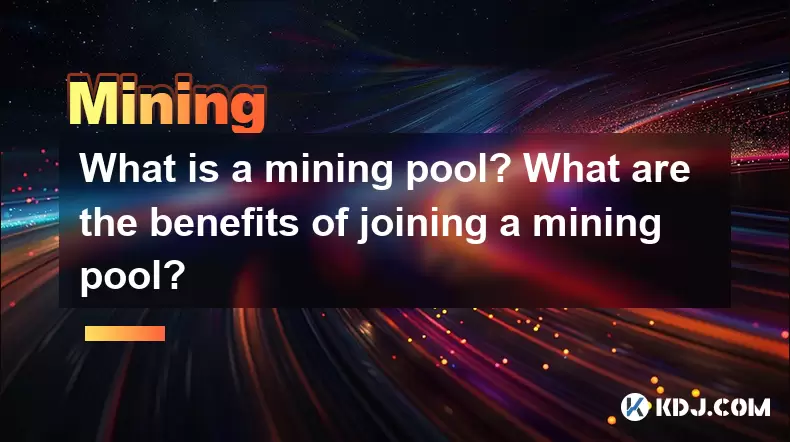-
 Bitcoin
Bitcoin $114800
-3.31% -
 Ethereum
Ethereum $3641
-5.84% -
 XRP
XRP $2.948
-6.36% -
 Tether USDt
Tether USDt $0.9998
-0.03% -
 BNB
BNB $772.4
-3.97% -
 Solana
Solana $169.1
-6.68% -
 USDC
USDC $0.9999
-0.01% -
 Dogecoin
Dogecoin $0.2056
-8.09% -
 TRON
TRON $0.3247
-0.18% -
 Cardano
Cardano $0.7239
-7.43% -
 Hyperliquid
Hyperliquid $39.71
-8.60% -
 Stellar
Stellar $0.3912
-7.84% -
 Sui
Sui $3.510
-10.17% -
 Chainlink
Chainlink $16.59
-8.03% -
 Bitcoin Cash
Bitcoin Cash $560.5
-3.65% -
 Hedera
Hedera $0.2464
-10.08% -
 Avalanche
Avalanche $22.03
-7.87% -
 Ethena USDe
Ethena USDe $1.001
-0.02% -
 UNUS SED LEO
UNUS SED LEO $8.947
0.21% -
 Toncoin
Toncoin $3.389
-2.58% -
 Litecoin
Litecoin $104.9
-5.23% -
 Shiba Inu
Shiba Inu $0.00001220
-6.67% -
 Polkadot
Polkadot $3.652
-6.10% -
 Uniswap
Uniswap $9.213
-9.05% -
 Monero
Monero $307.2
-2.93% -
 Dai
Dai $0.9998
-0.02% -
 Bitget Token
Bitget Token $4.367
-2.89% -
 Cronos
Cronos $0.1374
-6.80% -
 Pepe
Pepe $0.00001056
-8.65% -
 Aave
Aave $257.3
-7.31%
What is a mining pool? What are the benefits of joining a mining pool?
Joining a mining pool increases chances of earning rewards and provides a more consistent income stream, making it beneficial for miners with limited resources.
May 16, 2025 at 04:08 am

A mining pool is a collaborative group of cryptocurrency miners who combine their computational resources to increase their chances of successfully mining a block and earning the associated rewards. By pooling their resources, miners can share the workload and the rewards, making the process more efficient and potentially more profitable for individual participants. In this article, we will explore the concept of mining pools in detail and discuss the benefits of joining one.
How Does a Mining Pool Work?
Mining pools operate by distributing the workload of mining a block across multiple participants. When a block is successfully mined, the reward is then divided among the members of the pool based on their contributed computational power. This process is managed by a pool operator, who typically charges a small fee for their services.
- Joining a Pool: To join a mining pool, a miner needs to connect their mining hardware to the pool's server. This is usually done by configuring the mining software to point to the pool's address.
- Contribution and Rewards: Once connected, the miner's hardware will start working on solving the cryptographic puzzles required to mine a block. The pool's software will distribute these puzzles to all connected miners, and when a block is successfully mined, the reward is shared according to each miner's contribution.
- Pool Fees: Most mining pools charge a fee, which is typically a percentage of the total reward. This fee covers the operational costs of running the pool and maintaining the necessary infrastructure.
Benefits of Joining a Mining Pool
Joining a mining pool offers several advantages for individual miners, particularly those with limited computational resources. Here are some of the key benefits:
Increased Chance of Earning Rewards
One of the primary benefits of joining a mining pool is the increased likelihood of earning rewards. Mining solo can be highly unpredictable, as the chances of successfully mining a block are low for individual miners. By pooling resources, miners can collectively solve more puzzles and increase their chances of earning a reward.
More Consistent Income
Mining pools provide a more consistent income stream compared to solo mining. Since the rewards are distributed among the pool members, miners can expect to receive smaller, but more frequent, payouts. This can be particularly beneficial for miners who rely on mining as a steady source of income.
Reduced Variance
The variance in mining rewards can be significant when mining solo. Joining a mining pool helps to reduce this variance, as the rewards are shared among a larger group. This means that miners are less likely to experience long periods without any rewards, making the mining process more predictable and stable.
Access to Advanced Mining Software
Many mining pools offer access to advanced mining software and tools that can help optimize the mining process. These tools can include features such as automatic difficulty adjustment, real-time statistics, and detailed performance reports. By using these tools, miners can improve their efficiency and potentially increase their earnings.
Support and Community
Joining a mining pool often means becoming part of a larger community of miners. This can provide valuable support and resources, including forums, tutorials, and advice from more experienced miners. Being part of a community can also help miners stay updated on the latest developments in the cryptocurrency space.
Types of Mining Pools
There are several types of mining pools, each with its own structure and reward distribution system. Understanding these different types can help miners choose the best pool for their needs.
Pay-per-Share (PPS) Pools
Pay-per-Share (PPS) pools pay miners a fixed amount for each share they contribute to the pool, regardless of whether the pool successfully mines a block. This system provides a more predictable income stream, as miners know exactly how much they will earn for their contributions.
Proportional Pools
Proportional pools distribute rewards based on the proportion of shares contributed by each miner. When a block is mined, the total reward is divided among the miners according to their share of the total work done. This system can be more rewarding for miners who contribute more computational power.
Score-Based Pools
Score-based pools use a more complex reward system that takes into account the time at which shares are submitted. Miners who submit shares earlier in the mining round are rewarded more than those who submit later. This system aims to encourage miners to contribute consistently throughout the mining process.
Peer-to-Peer Pools
Peer-to-peer pools operate without a central server, instead using a decentralized network of miners to manage the pool. This can provide greater security and privacy, as there is no single point of failure. However, these pools can be more complex to set up and manage.
Choosing the Right Mining Pool
Selecting the right mining pool is crucial for maximizing the benefits of pooled mining. Here are some factors to consider when choosing a pool:
Pool Size and Hash Rate
The size of the pool and its total hash rate can significantly impact the frequency and size of rewards. Larger pools tend to mine blocks more frequently, resulting in more consistent payouts. However, they may also have higher fees and more competition among miners.
Pool Fees
Pool fees can vary widely between different pools. It's important to consider the fee structure and how it will impact your overall earnings. Some pools offer lower fees but may have less reliable payouts, while others may charge higher fees but provide more consistent rewards.
Reward Distribution System
The reward distribution system used by the pool can also affect your earnings. Different systems, such as PPS, proportional, and score-based, can have different impacts on your income. Consider which system aligns best with your mining goals and risk tolerance.
Pool Reputation and Reliability
The reputation and reliability of the pool are crucial factors to consider. Look for pools with a strong track record of paying out rewards on time and maintaining a stable and secure infrastructure. Reading reviews and seeking recommendations from other miners can help you assess a pool's reliability.
Additional Features and Support
Additional features and support offered by the pool can also be important. Some pools provide advanced mining software, detailed statistics, and community support, which can enhance your mining experience. Consider what features are most important to you and choose a pool that meets your needs.
Frequently Asked Questions
Q: Can I switch between different mining pools?
A: Yes, you can switch between different mining pools at any time. Most mining software allows you to easily change the pool address and start mining with a new pool. However, keep in mind that switching pools may affect your earnings, as different pools have different fee structures and reward systems.
Q: How do I know if a mining pool is trustworthy?
A: To determine if a mining pool is trustworthy, you can look at several factors. Check the pool's reputation by reading reviews and seeking recommendations from other miners. Look for pools that have been operating for a long time and have a track record of paying out rewards on time. Additionally, consider the pool's transparency and security measures, such as the use of SSL encryption and regular audits.
Q: What is the minimum amount of computational power required to join a mining pool?
A: The minimum amount of computational power required to join a mining pool can vary depending on the pool's requirements. Some pools have no minimum requirements and welcome miners of all sizes, while others may have a minimum hash rate threshold. It's best to check the specific requirements of the pool you are interested in joining.
Q: Can I mine multiple cryptocurrencies in the same mining pool?
A: Some mining pools support mining multiple cryptocurrencies, while others are dedicated to a single cryptocurrency. If you are interested in mining multiple cryptocurrencies, look for pools that offer multi-coin support. These pools will allow you to switch between different cryptocurrencies based on your preferences and the current market conditions.
Disclaimer:info@kdj.com
The information provided is not trading advice. kdj.com does not assume any responsibility for any investments made based on the information provided in this article. Cryptocurrencies are highly volatile and it is highly recommended that you invest with caution after thorough research!
If you believe that the content used on this website infringes your copyright, please contact us immediately (info@kdj.com) and we will delete it promptly.
- Bitcoin, Ethereum, and Investor Behavior: A New York Minute on Crypto Trends
- 2025-08-01 15:10:12
- Tether's Q2 Triumph: USDT Supply Soars Amidst Profit Surge!
- 2025-08-01 15:10:12
- Ethereum ETF Holdings: A Corporate Treasury Revolution?
- 2025-08-01 15:30:12
- Ethereum's Wild Ride: Funding Rates, Price Drops, and Retail to the Rescue!
- 2025-08-01 15:30:12
- Ethereum Under Pressure: Crypto Market Drop Explained
- 2025-08-01 15:35:11
- Ethereum ETF Mania: Inflows Surge, Market Rises, What's Next?
- 2025-08-01 15:35:11
Related knowledge

What was the highest APY for IRON mining?
Jul 23,2025 at 05:14am
Understanding IRON Token and Its Mining MechanismThe IRON token is a stablecoin that operates within the Iron Finance ecosystem, primarily on blockcha...

What is impermanent loss in IRON pools?
Jul 23,2025 at 09:00am
Understanding Impermanent Loss in the Context of IRON PoolsImpermanent loss is a phenomenon that affects liquidity providers in decentralized finance ...

How to claim rewards from IRON mining?
Jul 23,2025 at 02:21pm
Understanding IRON Mining and Reward MechanismsIRON Finance operated as a decentralized finance (DeFi) protocol on the Polygon and Binance Smart Chain...

How to claim rewards from IRON mining?
Jul 29,2025 at 05:07am
Understanding IRON Mining and Reward MechanismIRON is a dual-token system designed to stabilize the value of a synthetic asset through a combination o...

IRON mining tutorial for beginners
Jul 27,2025 at 12:01am
What Is IRON and How Does It Work in the Cryptocurrency Ecosystem?IRON is a cryptocurrency token that operates on the Binance Smart Chain (BSC) and is...

How to calculate APY for IRON mining?
Jul 28,2025 at 09:49am
Understanding APY in the Context of IRON Token MiningWhen engaging in IRON token mining within decentralized finance (DeFi) platforms, Annual Percenta...

What was the highest APY for IRON mining?
Jul 23,2025 at 05:14am
Understanding IRON Token and Its Mining MechanismThe IRON token is a stablecoin that operates within the Iron Finance ecosystem, primarily on blockcha...

What is impermanent loss in IRON pools?
Jul 23,2025 at 09:00am
Understanding Impermanent Loss in the Context of IRON PoolsImpermanent loss is a phenomenon that affects liquidity providers in decentralized finance ...

How to claim rewards from IRON mining?
Jul 23,2025 at 02:21pm
Understanding IRON Mining and Reward MechanismsIRON Finance operated as a decentralized finance (DeFi) protocol on the Polygon and Binance Smart Chain...

How to claim rewards from IRON mining?
Jul 29,2025 at 05:07am
Understanding IRON Mining and Reward MechanismIRON is a dual-token system designed to stabilize the value of a synthetic asset through a combination o...

IRON mining tutorial for beginners
Jul 27,2025 at 12:01am
What Is IRON and How Does It Work in the Cryptocurrency Ecosystem?IRON is a cryptocurrency token that operates on the Binance Smart Chain (BSC) and is...

How to calculate APY for IRON mining?
Jul 28,2025 at 09:49am
Understanding APY in the Context of IRON Token MiningWhen engaging in IRON token mining within decentralized finance (DeFi) platforms, Annual Percenta...
See all articles

























































































